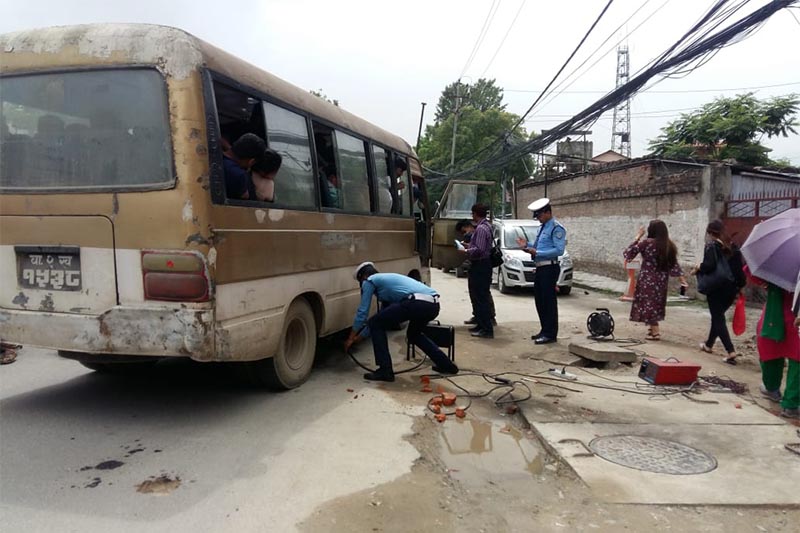‘Mechanically fit' old vehicles likely to get permission to operate
Kathmandu, October 28
The government is set to allow ‘mechanically fit' 20-year-old public vehicles to ply on the country's roads.
Under pressure from transport entrepreneurs, the Ministry of Physical Infrastructure and Transport (MoPIT) recently tabled a proposal at the Cabinet to allow such previously termed ‘outdated vehicles' to operate.
Citing that the 20-year-old vehicles are one of the major pollutants of the environment and had been causing trouble in traffic management, the government had banned the operation of such vehicles in Kathmandu Valley effective from March 1. However, backtracking from its earlier decision to curb such old public vehicles, the government will let them operate if they are technically fit if MoPIT's proposal gets endorsed by the Cabinet.
“Though we had banned such vehicles, we received a lot of pressure from the local and provincial governments and the private sector to allow mechanically fit public vehicles to operate. Thus, we had reported this issue to MoPIT before Dashain,” informed Lawanya Prasad Dhakal, director general at the Department of Transport Management (DoTM).
Meanwhile, Transport Secretary Madhusudan Adhikari, acknowledged that the proposal to allow mechanically fit old public vehicles has been tabled at the Cabinet. “It is not that old aged vehicles necessarily pollute the environment while comparatively new vehicles do not. A mechanically fit old vehicle can emit less harmful gases while a mechanically not fit new vehicle can emit more,” he informed.
As per him, those public vehicles which are found to be in proper condition will be allowed to operate if the Cabinet gives a nod to MoPIT's proposal.
However, the government has said that such 20-year-old vehicles must pass the fitness test at government-run vehicle fitness centres.
As per the DoTM's statistics, there are almost 5,000 such 20-year-old vehicles across the country and half of them are in Kathmandu Valley itself.
Along with transport entrepreneurs, the rationale behind the government's decision to ban old public vehicles had also been questioned by other stakeholders. Among others, officials at the Department of Environment (DoE) had been saying that the government should put a ban on public vehicles on the basis of vehicular emission instead of age if pollution is to be actually controlled.
Similarly, transport entrepreneurs had been demanding incentives from the government for the ban imposed on 20-year-old vehicles citing that such decision had put their investment worth billions in the public transportation sector at risk.






